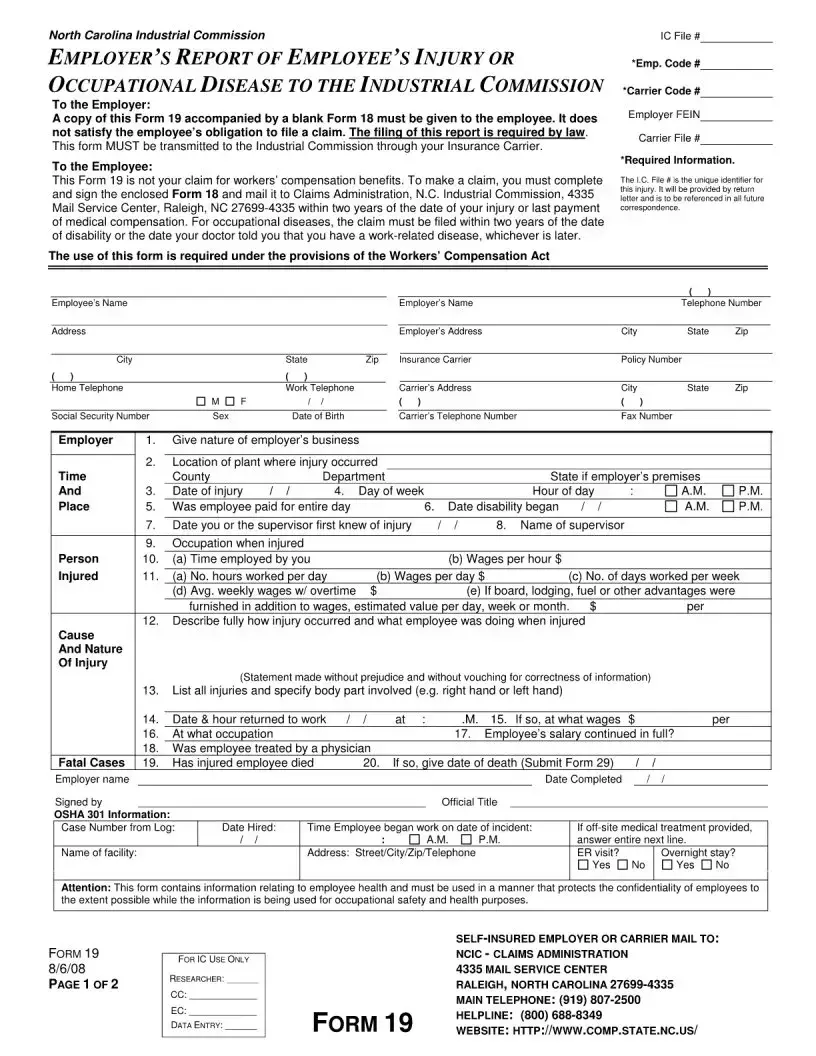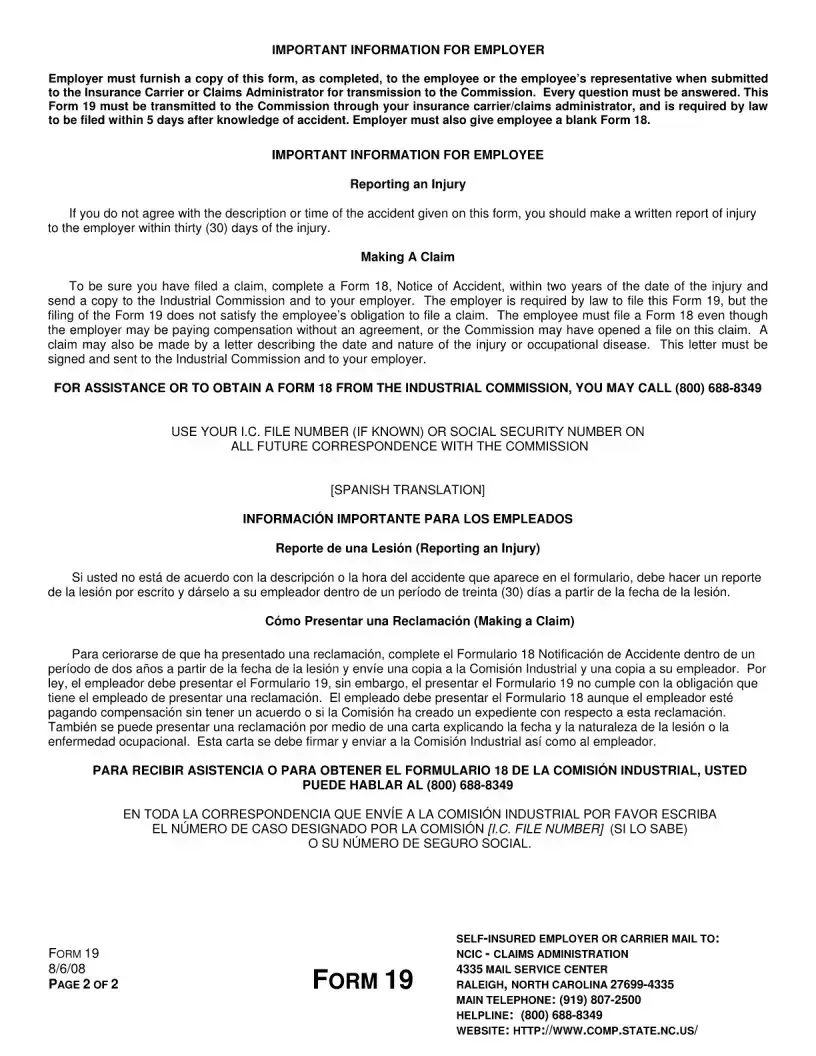The 19 North Carolina form is chiefly utilized to report workplace injuries and illnesses, serving as a notification to the state's industrial commission. This form closely mirrors the OSHA Form 300, which is a log used across the United States for recording work-related injuries and illnesses. Both documents are foundational for ensuring workplace safety and health compliance, mandating detailed record-keeping of any incidents that occur. They play a crucial role in identifying hazardous conditions at work and help in preventing future incidents. The primary difference lies in their scope of application, with the OSHA Form 300 catering to a broader, nationwide audience while the 19 North Carolina form is specific to the state of North Carolina.
Similarly, the First Report of Injury or Illness form used in various states is akin to the 19 North Carolina form in its purpose and content. This document is typically the first step in the claim process for workers' compensation, requiring detailed information about the worker, the injury or illness, and the circumstances surrounding the incident. Both forms initiate the process of claiming benefits and alerting relevant parties about the workplace incident, serving as key documentation in the workers' compensation system. Despite differences in specific requirements or format dictated by state regulations, their fundamental function of reporting work-related injuries or illnesses aligns closely.
Another analogous document is the Employer’s Report of Occupational Injury or Illness. Similar to the 19 North Carolina form, this report is filed with state workers' compensation boards to notify them of an incident. It often serves as a formal declaration of an injury or illness that occurred at work, facilitating the processing and evaluation of workers' compensation claims. Both forms require information concerning the employer, employee, and the details of the incident, ensuring a thorough understanding of the event for compensation and regulatory purposes.
The Workers’ Compensation Claim Form is directly related to the 19 North Carolina form, as it is another critical document in the process of reporting and claiming compensation for work-related injuries or illnesses. While the 19 North Carolina form serves to notify the state's industrial commission about an incident, the Workers’ Compensation Claim Form is generally filled out by the employee to officially begin the claim process. Both documents are integral to the workers' compensation system, with each playing a distinct role in ensuring that workers receive the benefits and support they need following a workplace incident.
The Incident Report Form, commonly utilized within organizations, shares the purpose of documenting specific details about accidents, injuries, or near misses that occur on the job. Like the 19 North Carolina form, this document aids in the collection of crucial information that can be used to improve safety measures and prevent future incidents. While Incident Report Forms may vary by organization and are typically internal documents, the objective of creating a safe and informed work environment is a common thread between these and the 19 North Carolina form.
Similarly, the Occupational Injury and Illness Incident Report is another document that focuses on the detailed record-keeping of workplace incidents, closely resembling the 19 North Carolina form. This report is essential for analyzing and understanding the circumstances leading to injuries or illnesses at work. Both documents serve as a basis for investigating incidents and formulating strategies to eliminate hazards, thus contributing to workplace safety and health promotion.
Finally, the Notice of Accident to Employer and Claim of Employee, Representative, or Dependent form serves a similar function to the 19 North Carolina form by formally notifying the employer and the state's workers' compensation board of an accident or illness. This notification is critical for initiating the claim process and ensuring that the injured or ill worker receives appropriate benefits. Both forms are foundational in the documentation and subsequent action following a workplace incident, highlighting the importance of prompt and accurate reporting in the workers' compensation system.

